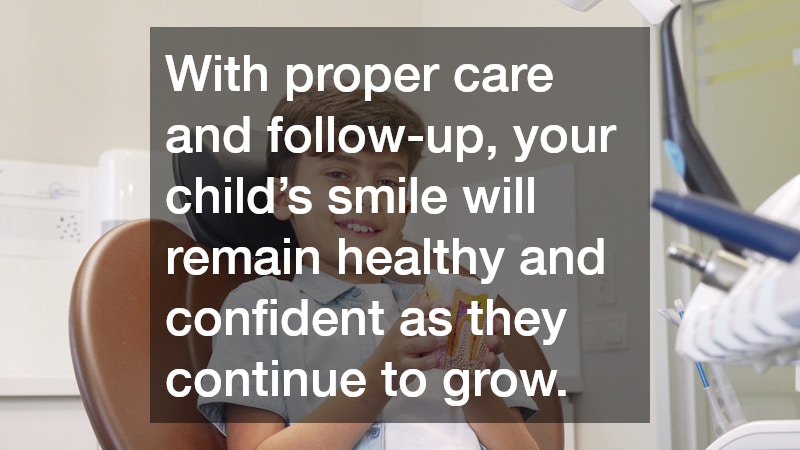
What to Expect from a Pediatric Tooth Extraction Visit
Disclaimer: The material provided is designed to inform readers about oral health and preventive care. It should not be considered medical advice. Consult a registered dentist for guidance specific to your oral health needs.
A pediatric tooth extraction can sound intimidating for both children and parents, but it’s a routine dental procedure performed with care and comfort in mind. Understanding what happens before, during, and after the visit can ease anxiety and help ensure a smooth experience. This guide explains why extractions may be necessary, how to prepare your child, and what to expect during recovery.
Why Is a Tooth Extraction Necessary for Children?
Children may need a pediatric tooth extraction for various reasons. Severe tooth decay, infection, or trauma can make saving a tooth impossible. Extractions may also be necessary when baby teeth don’t fall out naturally, blocking the eruption of permanent teeth, or when orthodontic treatment requires extra space.
Dental Health Concerns and Solutions
When decay or infection reaches the tooth’s pulp, it can affect surrounding teeth or gums. Removing the affected tooth prevents pain and further complications, allowing healthy teeth to develop properly.
Indicators That Extractions Are Needed
Signs your child may need an extraction include persistent pain, swelling, loose baby teeth that won’t fall out, or crowding. A pediatric dentist will conduct X-rays and an oral exam to determine the best treatment.
Preventative Measures and Alternatives
While extraction is sometimes unavoidable, preventive care like regular cleanings, fluoride treatments, and early cavity detection can reduce the likelihood of tooth removal. When possible, dentists explore alternatives such as fillings or pulpotomies (baby tooth root canals).
How to Prepare Your Child for a Tooth Extraction
Be honest yet reassuring. Explain that the pediatric tooth extraction will help keep their smile healthy and pain-free. Avoid scary words like “pull” or “needle” — instead, use comforting phrases like “the dentist will help your tooth wiggle out safely.”
Dietary and Physical Preparation
Your dentist will give specific instructions, especially if sedation is involved. Generally, children should avoid eating or drinking for a few hours before the procedure if anesthesia is used. Comfortable clothing and a good night’s sleep can also make the visit easier.
Psychological Readiness and Support
Help your child feel at ease by maintaining a calm attitude. Reading books or watching kid-friendly videos about dental visits can help them understand what to expect.
What to Bring on the Day of the Appointment
Bring any medical records, insurance cards, comfort items (like a stuffed toy), and a favorite blanket or headphones. These small items can help your child feel secure.
What to Expect During the Tooth Extraction Procedure
The appointment begins with a quick check-up and the administration of a local anesthetic or sedation, depending on your child’s comfort level and the tooth’s condition. The area around the tooth is completely numbed to prevent pain. Once the area is numb, the dentist gently loosens the tooth using specialized instruments and carefully removes it. For stubborn teeth or those below the gumline, a small incision may be made.
Techniques and Tools Used by Pediatric Dentists
Pediatric dentists use child-sized instruments and gentle techniques designed to minimize discomfort. They often employ distraction methods or communication strategies to keep children calm.
Duration and Expected Sensations
Most extractions take 20 to 40 minutes, depending on complexity. Children may feel mild pressure but no pain during the procedure.
Monitoring Your Child During the Procedure
Dental staff closely monitor your child’s vital signs and comfort throughout the process, ensuring safety at every step.
Post-Extraction Care and Recovery
After the pediatric tooth extraction, your child will rest briefly while the dentist checks for bleeding and gives you aftercare instructions. A gauze pad helps control bleeding, and children should bite down gently for 20–30 minutes.
Pain Management and Comfort Measures
Mild soreness is normal. Over-the-counter pain relief, such as acetaminophen or ibuprofen (as directed by your dentist), can help. Applying an ice pack to the cheek can also reduce swelling.
Dietary Restrictions and Recommendations
Soft foods like yogurt, mashed potatoes, and smoothies are best for the first 24–48 hours. Avoid crunchy, spicy, or hot foods that might irritate the extraction site. Encourage plenty of water and avoid using straws to prevent dry socket.
Signs of Complications and When to Call the Dentist
Contact your dentist if you notice excessive bleeding, persistent pain, swelling, or signs of infection such as fever or foul odor. Prompt follow-up ensures proper healing.
Long-Term Recovery: What to Expect
Within a few days, discomfort should subside, and normal activities can resume. The dentist may schedule a follow-up visit to check healing and discuss space maintenance if a primary tooth was extracted early.
Helping Your Child Heal with Confidence
A pediatric tooth extraction is a safe and routine procedure that helps protect your child’s dental health and prevent future complications. By understanding each step — from preparation to recovery — parents can support a calm, positive experience for their child. With proper care and follow-up, your child’s smile will remain healthy and confident as they continue to grow.




